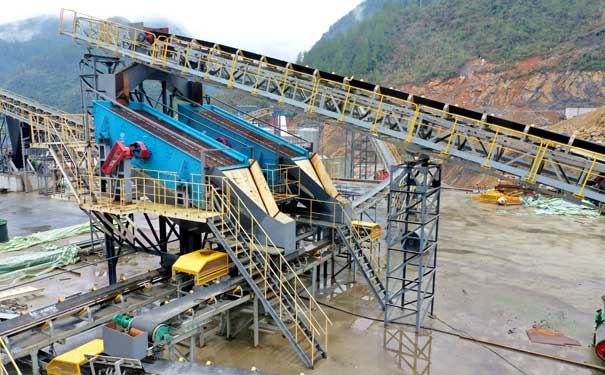In actual production, some users report that the vibrating screen always fails to reach the set processing capacity, and the efficiency is low. As important equipment in the screening industry, the screening effect of the vibrating screen not only has a great impact on the value of the product, but also directly has an important impact on the efficiency of the next operation. Therefore, this article summarizes 6 measures to improve the efficiency and performance of the vibrating screen, hoping to help everyone’s production.

- Choose the right type of vibrating screen
Although the screening effect mainly depends on the nature of the material to be screened, different screening effects can be obtained by using different types of screening equipment for the same material. - Reasonably select the vibration motor and adjust the excitation force
The reasonable selection of the vibrating motor is one of the key links that affect the performance of the vibrating screen, and the size of the exciting force is the core factor that affects the productivity of the vibrating screen.
1) Selection of vibration motor
2) Adjustment of exciting force
The exciting force of the vibrating motor is the centrifugal inertia force generated by the high-speed rotating eccentric mass. By changing the eccentricity and thus the amplitude of the exciting force, the effect of adjusting the exciting force can be achieved. - Improve the movement of the screen surface
The movement mode of the screen has a great influence on the working efficiency of the vibrating screen. The ideal way of sieve surface movement should be:
1) The vertical amplitude at the feed end of the screen surface should be greater than the vertical amplitude at the discharge end.
2) Along the length of the screen surface, starting from the feeding end, the moving speed of the material should be in a state of decreasing. - Use non-metallic material screen
The non-metallic screen has the following advantages:
1) Improve screening efficiency. It can improve the screening efficiency of metal screen by about 20%.
2) Good wear resistance and long service life. Its average life span is more than 25 times that of metal screens.
3) Reduce installation time and improve equipment operation rate.
Since the service life of the non-metallic screen is greatly extended, the number of replacement of the screen surface is reduced, and the equipment operation rate is generally 15% higher than that of the metal screen.
4) Reduce noise and improve working environment.
In addition to the resonance of the metal screen with the screen box during work, the mesh also produces some vibrations. This phenomenon is more obvious after wear. In addition, the rigid collision of the material on the surface of the box and the vibration of other parts cause higher noise. The whole sieve plate of the non-metallic material screen is a whole, which has a certain buffering effect and can reduce the noise by about 20dB(A). - Adopt multi-channel feeding method
The vibrating screen generally adopts one-way feeding. After the material is supplied to the screen surface, most of the material smaller than the separated particle size will quickly pass through the screen hole at the feeding end and become the under-screen product, and the distance from the discharge end is 1/3~1/ 2 screen surface, in addition to continuing to play a certain screening role, mainly plays a role in transportation, so the utilization rate of the screen surface is not high. - Strengthen operation management
Operation and maintenance also have a certain impact on the performance of the vibrating screen. In order to operate the vibrating screen with high efficiency, it must be carefully operated in strict accordance with the operating procedures. For example, the feeding should be uniform, continuous and appropriate to ensure that the material is evenly distributed along the entire width of the screen, in order to facilitate the penetration of fine particles and obtain a higher processing capacity and screening efficiency.
In addition, it is necessary to strengthen the maintenance and maintenance of the screen machine, such as cleaning the screen surface and repairing and replacing the damaged screen surface in time to ensure that the equipment is in good condition.

